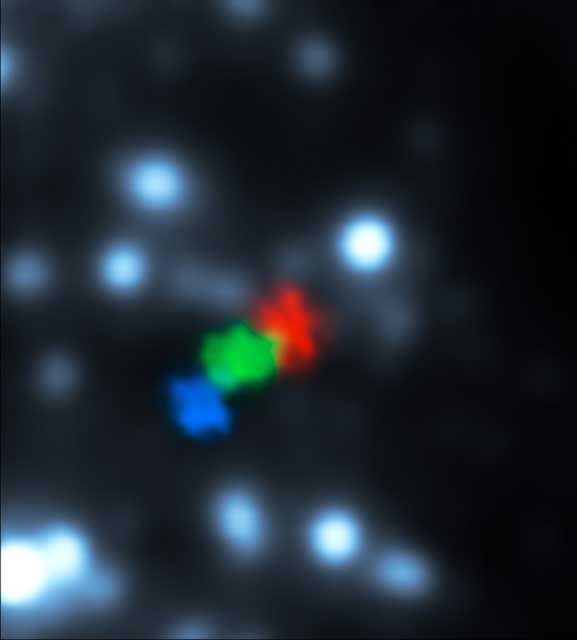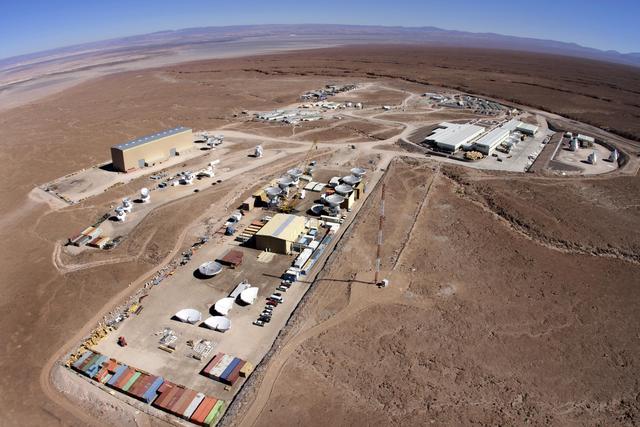|
Page 2/2 - Posted June 27, 2014
The addition of SPT to Event Horizon Telescope will increase resolutionThe SPT really helps stretch the resolution of the current EHT, which now includes radio telescopes in Hawaii, California and Arizona, according to Marrone. “The SPT occupies a unique spot on the globe, and this is especially true for looking at the center of the galaxy,” he explained. “If you imagine looking at the Earth from the direction of Sgr A*, you'd see that Arizona and California are near one edge, Chile is right in the middle, and the South Pole is at the opposite edge. “Adding the SPT to the EHT allows us to see details almost twice as fine as we could otherwise, it really does give us a telescope the size of the whole Earth,” he added.The EHT experiment started in 2007 and has already collected crucial data. The addition of SPT and the Atacama Large Millimeter Array (ALMA) Greer said the team hopes to make concurrent observations using SPT with rest of the EHT array by March 2015. Observations over a handful of days during a two-week window of opportunity would be considered successful. 
Photo Credit: European Southern Observatory
Observations the European Southern Observatory's Very Large Telescope show for the first time a gas cloud being ripped apart by the supermassive black hole at the center of the Milky Way Galaxy from 2006 to 2013.
“They’re hard to do. You have to get good weather all over the Earth. That’s the scale of the challenge,” said Greer, who with Marrone visited the South Pole Station earlier this year to determine how best to install the new EHT instrumentation onto the existing SPT facility. A few days is all EHT astronomers need to collect their data, information that will not only improve their understanding of black holes, but to test the very foundation of a big chunk of cosmology, including Einstein’s somewhat hallowed theory of general relativity, which has held up remarkably well to a century of observations. Einstein’s theory of general relativity and quantum field theory are two of the most successful theories in physics that together describe the four fundamental forces of nature. Einstein covers gravity, while quantum mechanics accounts for electromagnetic, weak, and strong force interactions on much smaller scales. Physicists can turn to particle accelerators to test some of the underpinnings of quantum mechanics. Meanwhile, gravity has passed all its trials to date. Those searching for a grand, unifying theory – some call it quantum gravity – wonder if observations of gravitational forces in an extreme environment might reveal some flaw in Einstein’s calculation that may require rebooting or at least rethinking general relativity. There are no laboratories on Earth that can simulate such conditions. “For us, it means going to a black hole, which is the most extreme time-space environment you can imagine,” Greer said. One of the latest volleys in the ongoing debate on a quantum-gravity theory came from leading physicist Stephen Hawking Earlier this year, the University of Cambridge 
Photo Credit: NRAO/AUI/NSF, Carlos Padilla
The entire ALMA Operations Center in Chile seen from above.
Nature News reported that Hawking’s new work attempts to solve the “black-hole firewall paradox,” which was put forth a couple of years ago by theoretical physicist Joseph Polchinski “The only thing I wondered while reading this news about Hawking was, ‘Will this change what the EHT expects to see?’ The answer is no,” Greer said. “Hawking is concerned with material after it falls in, and the immediate goal of the EHT is to watch the material before and as it falls in.” These are the sort of thought experiments that theorists like Hawking dream up. Now it will be up to experimentalists like Marrone, Carlstrom and Doeleman to see what’s really happening out there. “The Event Horizon Telescope is going to look at emission at the edge of the black hole itself,” Doeleman told Space.com. “That’s an area where the gravity is so strong that light is bent and the structures you see are dominated by strong gravity, where you absolutely need Einstein to understand what you’re seeing. It becomes a laboratory of extremes.” NSF-funded research in this story: Daniel Marrone, University of Arizona, Award No. 1207752 |



For USAP Participants |
For The Public |
For Researchers and EducatorsContact UsU.S. National Science FoundationOffice of Polar Programs Geosciences Directorate 2415 Eisenhower Avenue, Suite W7100 Alexandria, VA 22314 Sign up for the NSF Office of Polar Programs newsletter and events. Feedback Form |


